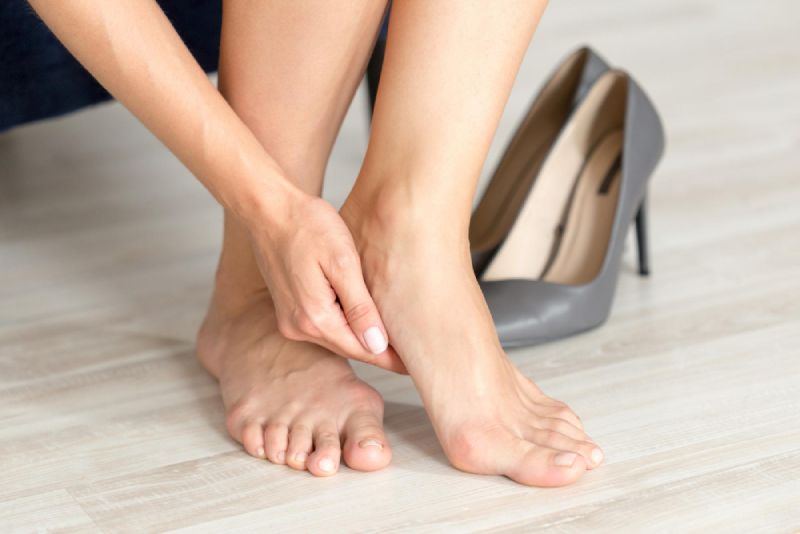Diabetes can cause various skin-related issues, including discoloration or yellowing of the skin. This can be due to multiple factors such as poor blood circulation, high bilirubin levels, or skin conditions associated with diabetes. In this article, we will discuss why diabetic toes may turn yellow, the concept of “diabetic face,” and the color of diabetic foot skin.
Why Do Diabetics Toes Turn Yellow?
Diabetic patients may experience yellowing of their toes due to a combination of factors, including:
- Poor blood circulation: Diabetes can cause damage to blood vessels, leading to reduced blood flow to the extremities like the toes. This may result in a yellowish discoloration of the skin.
- High bilirubin levels: Diabetes can cause liver dysfunction, leading to an increase in bilirubin levels in the bloodstream. Excess bilirubin can accumulate in the skin, causing it to appear yellow.
- Fungal infections: People with diabetes are more prone to fungal infections, such as athlete’s foot. These infections can cause the skin on the toes to become discolored and appear yellow.
If you notice yellowing of your toes, it is essential to consult a healthcare professional for proper diagnosis and treatment.
What is Diabetic Face?
“Diabetic face” is a term sometimes used to describe the facial appearance of people with long-standing, uncontrolled diabetes. This appearance is characterized by certain features, such as:
- Yellowing of the skin: As mentioned earlier, high bilirubin levels due to liver dysfunction can cause the skin to appear yellow, affecting the face as well.
- Thinning of the skin: Diabetes can cause a reduction in collagen production, leading to thinner, more fragile skin. This can result in an aged appearance and more visible blood vessels on the face.
- Glycation: High blood sugar levels can lead to a process called glycation, which damages collagen and elastin fibers in the skin. This can cause the skin to lose its elasticity and firmness, leading to wrinkles and sagging.
It is important to note that not all people with diabetes will develop these facial characteristics. Maintaining good blood sugar control and following a healthy lifestyle can help prevent or minimize these changes.
What Color is Diabetic Foot Skin?
The color of diabetic foot skin can vary depending on the underlying cause of the discoloration. Some common colors and their associated causes include:
| Color | Possible Cause |
|---|---|
| Red | Inflammation or infection |
| Blue or purple | Poor blood circulation or venous insufficiency |
| Yellow | High bilirubin levels or fungal infections |
| Brown | Hemosiderin staining due to chronic venous insufficiency |
It is crucial for people with diabetes to monitor their feet regularly for any changes in skin color, texture , or sensation. If you notice any unusual changes, consult a healthcare professional promptly for proper diagnosis and treatment.
Preventing and Managing Skin Issues in Diabetes
To prevent and manage skin issues related to diabetes, consider the following tips:
- Maintain good blood sugar control: Keeping your blood sugar levels within the target range can help prevent many skin-related complications associated with diabetes.
- Practice proper foot care: Inspect your feet daily for any cuts, blisters, or signs of infection. Keep your feet clean and moisturized, and wear comfortable, well-fitting shoes.
- Stay hydrated: Drinking sufficient water can help maintain skin elasticity and prevent dryness, which is important for overall skin health.
- Adopt a healthy lifestyle: Eating a balanced diet, exercising regularly, and managing stress can help improve your overall health and reduce the risk of skin-related issues.
- Consult a healthcare professional: If you notice any skin changes or have concerns about your skin, seek medical advice from a healthcare professional for proper diagnosis and treatment.
In conclusion, diabetes can cause various skin issues, including yellowing of the skin. This can be due to factors such as poor blood circulation, high bilirubin levels, or skin conditions associated with diabetes. Maintaining good blood sugar control, practicing proper foot care, and adopting a healthy lifestyle can help prevent and manage these skin-related complications. If you notice any unusual skin changes, consult a healthcare professional for proper diagnosis and treatment.
